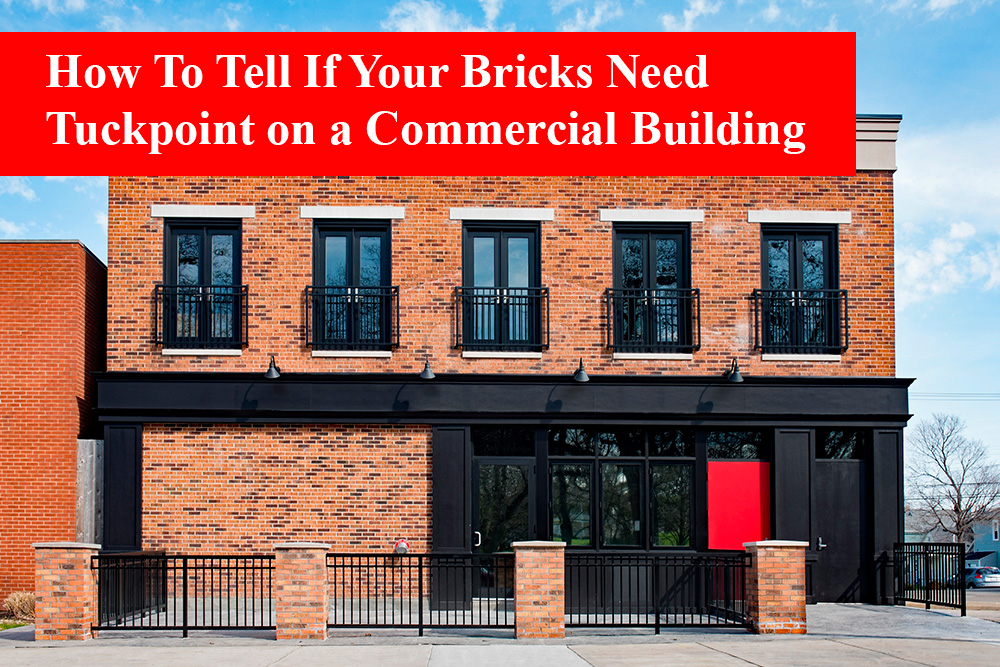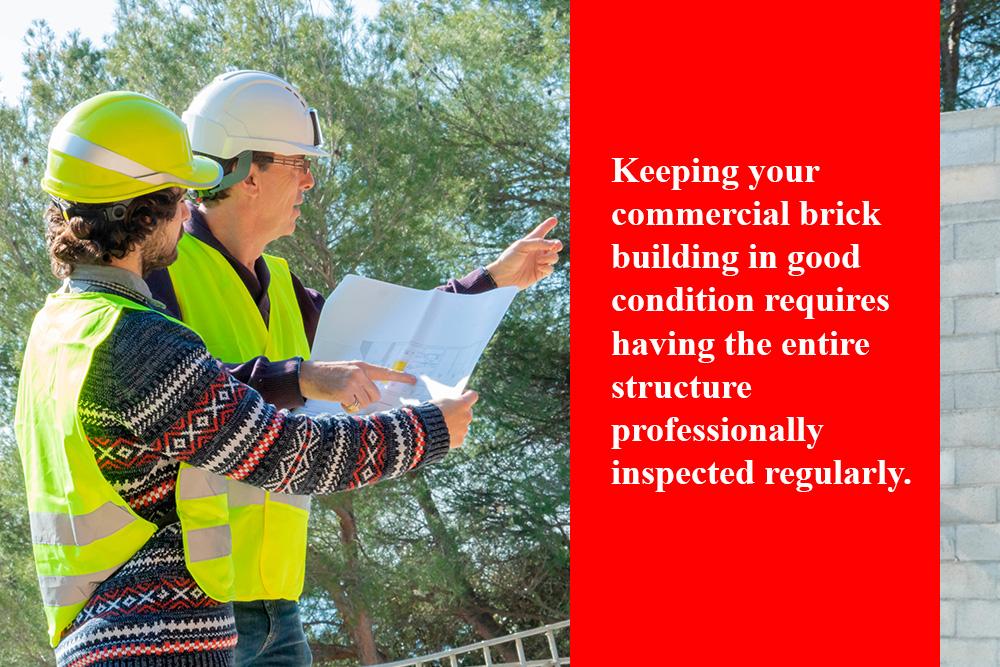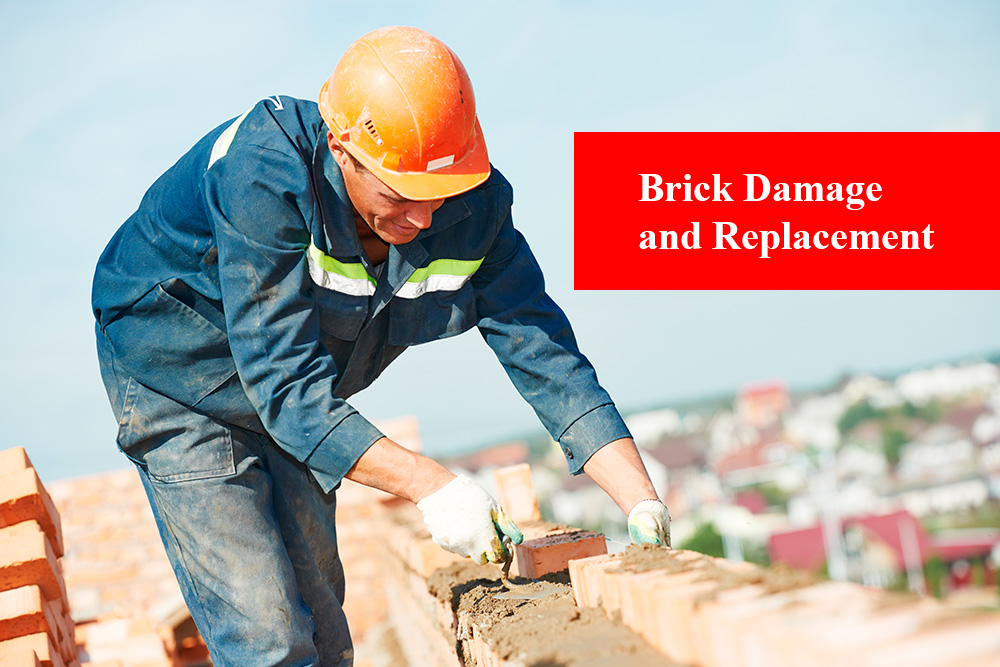
Brick buildings are stylish and built to withstand the test of time, provided they receive the required maintenance. While the bricks are relatively impervious to the elements, the mortar that holds everything together can become weak, cracked, and even completely disintegrate over time from exposure to the sun’s UV rays, wind, moisture, and freezing temperatures. However, commercial brick buildings can stand for centuries when properly cared for.
Keeping your commercial brick building in good condition requires having the entire structure professionally inspected regularly. The single most important part of the inspection is determining if the mortar needs repair. Mortar repair, known as tuckpointing, should be executed as soon as issues are discovered to avoid further and more extensive damage.
Commercial masonry restoration contractors specializing in historic masonry should be consulted for older buildings with historical value. This is an important consideration as not all commercial masonry contractors will have the knowledge and experience to repair brick buildings built before the early 1900s. This is largely due to the fact that mortar composition has changed drastically since the last century.

Inspection
The starting point of your commercial brick maintenance routine should include a thorough professional inspection of the building. This must be done before any cleaning so the brick and mortar can be appropriately evaluated. Failure to undertake this all-important step can result in damage being caused by the cleaning process itself. As there are several cleaning procedures that can be used on brick, selecting the wrong method can cause the mortar and even the brick to break down. This is a critical issue when working with historic masonry buildings, as older bricks and lime-based mortar are highly susceptible to damage.
While the most obvious sign the bricks need tuckpointing is failing mortar, there can be other indications as well. Dampness on the building’s interior can be a sign of damaged mortar or bricks that allow water to infiltrate the building. This can be as obvious as a penetrating and constant dampness such as water droplets or a stream of water running inside the building during or immediately after a storm. Water intrusion is often the result of water shifting from a higher section of the building to a lower one. Crumbling plaster and sagging sheetrock are also clear indications of water intrusion. Water damage can also be less obvious, such as in the case of rotting timbers. While a number of factors can cause it, water intrusion is often the result of failing brick or mortar. If this is the case, pressure washing will typically only exacerbate the problem.

Cleaning
If the inspection does not turn up any significant issues, a thorough cleaning should be done on a regular basis. This will not only make the building look better; a thorough, professional cleaning will remove any potentially damaging contaminants such as salt, bird droppings, and ozone. If not removed, these contaminates can infiltrate the brick due to its porous nature and can cause damage to both the brick and mortar.
Wire brushes should not be used on brick as the bristles may leave metal residue that can result in rust and discoloration. Abrasive cleaning methods, such as power washing and sandblasting, should be used very carefully and only when absolutely necessary as these can wear away at the brick’s protective outside surface and result in the bricks and mortar failing. Chemical cleaning is another method that must be used sparingly as it may leave stains and residue that can cause damage if used at a too high concentration or not rinsed off completely. Even using just plain water can cause efflorescence, a coating of a white powdery substance that is pulled out of the pores of the bricks.

Brick Tuckpointing – Damage and Replacement
Brickwork may appear solid to the casual observer, but it can fail unexpectedly if not taken care of. The brickwork is not just the most visible part of your commercial property, it provides at least part of the building’s support. If the brick starts to fail, the integrity of the building quickly becomes compromised and jeopardizes the safety of occupants and passersby.
Bricks suffer water damage from the two root causes of rising dampness and a phenomenon referred to as “splashback”. Splashback happens when brickwork is subjected to constant rain, and the water finds its way into crevices in the brick and mortar. Rising dampness occurs when groundwater rises up and leaves a “tide line” on the brick, similar to the high tide marks on the ocean shore. If salt contained in the groundwater gets on or works into the brick, the brick can begin deteriorating.
When bricks need to be replaced, the new bricks must be matched to the existing ones for the repair to look seamless. This is especially important for historic buildings as new bricks must be period correct to match the existing ones and maintain the historic appearance and value of the building. It is highly recommended the entire building be inspected at least once a year for any signs of water damage and contact a commercial tuckpointing and restoration specialist if needed.
Tuckpointing Mortar
Mortar is the glue that holds the bricks together, and when the bricks have to be replaced, the mortar must be replaced as well. However, depending on the type and how old it is, mortar may need to be replaced even if the bricks are still in excellent shape. Replacing mortar is known as tuckpointing, and tuckpointing brick requires skill for the repair to look right and the knowledge and experience to match the mortar to the rest of the building, so it all looks uniform. This is of critical importance when performing commercial tuckpointing on historic buildings.
Before 1871 brick buildings were constructed with lime-based mortar, and while lime mortar is versatile, it is only 1/10th the strength of cement-based mortar. Additionally, older lime-based mortar has a variety of colors and shading depending on the amount and type of lime used and different moisture retention properties. As such, it is imperative that the fresh mortar be matched to the existing mortar.
Due to varying factors, tuckpointing commercial buildings is a job best left to the professionals. Additionally, while many contractors have experience in performing a brick repair, it is vital to hire a contractor with experience in performing commercial tuckpointing. Having a contractor with the proper training, skill and experience is even more important if the building has historical value.

Epic Masonry Restoration has years of experience in maintaining commercial buildings and providing tuckpointing in St. Paul and Minneapolis and all types of repairs of commercial masonry in Minneapolis and the St. Paul greater metro area. At Epic, we go the extra mile to provide you with the most professional services to maintain the integrity and historic value of your building. To help you keep your commercial building in top condition, avoid expensive repair costs and significantly extend the service life of your commercial building, contact us at epicmasonryrestoration.com or give us a call at 612-353-4646 today.
